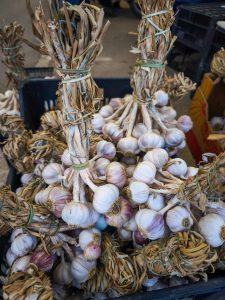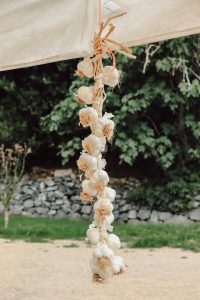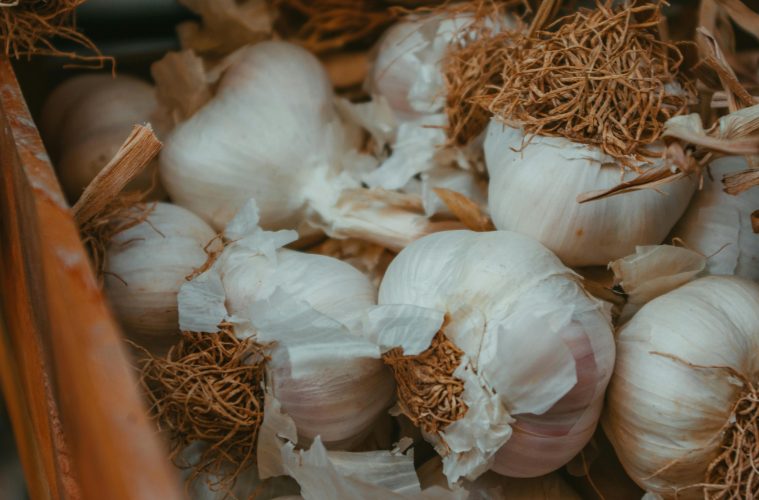Short on garden space? Garlic grows beautifully in containers on a patio, balcony or doorstep. The bulbs swell beneath the surface while tidy green leaves sit above, so you can harvest generously from a small footprint. Success comes down to timing, a free-draining mix, a deep pot and the right type for your climate.
When to plant and what to choose
Plant from late summer through mid-autumn, roughly late February to May. Cool weather helps the cloves split and form proper bulbs. Match the variety to your region. Hardneck types suit colder interiors with winter frosts, such as the Highveld and parts of the Free State. Softneck types are happier in milder coastal areas with light frost, including much of the Western and Eastern Cape and the KZN coast.
The best containers and potting mix
Depth matters because garlic is a root crop. Use pots at least 20 cm deep with generous drainage holes. An 8 to 12 litre pot suits a handful of cloves, while 20 to 40 litre tubs allow a small grid. Terracotta or sturdy plastic both work as long as drainage is good. Fill with quality potting soil blended with compost and loosen it with perlite or coarse sand so water drains freely without the mix drying to dust.

Pexels
How to plant the cloves
Break bulbs into individual cloves just before planting and keep the papery skins on. Plant each clove point up about 5 cm deep, leaving 8 to 12 cm between cloves. In larger tubs, keep 20 to 30 cm between rows if you are planting in a grid. Water to settle the mix and label the pot so you remember the planting date.
Winter care for our conditions
Most regions need only light protection. In frost-prone interiors, give morning sun and cover with frost cloth or an old sheet on freezing nights, keeping the mix lightly moist. In the Western Cape’s winter rainfall, prevent waterlogging by raising pots on feet, using a sharply draining mix and sliding containers under cover during long downpours. Mulch the surface with 2 to 3 cm of compost, leaf mould or straw to steady moisture and temperature.
Spring growth, feeding and day-to-day care
Shoots appear in late winter or early spring. Move pots into full sun and aim for at least six hours of direct light a day. Water when the top few centimetres feel dry and never leave pots standing in saucers of water. Once plants reach 10 to 15 cm tall, feed lightly with a balanced organic liquid feed every three to four weeks. Hardneck garlic produces curly flower stalks called scapes. Snip them off to direct energy into the bulbs and cook the scapes like mild garlic.
Good airflow and drainage prevent most problems. Keep an eye out for mite damage on leaves and any sign of rot from overwatering. Adjust watering and spacing if issues appear.

Pexels
When to harvest
Garlic is ready about five to six months after planting, so for late summer to autumn plantings, you can expect to harvest from November to January. Use the leaves as your guide. When the lower third to half have yellowed, gently loosen one plant and check the bulb. If you can feel distinct, well-formed cloves beneath tight skins, lift the rest. Slide a trowel or fork under the roots and ease the bulbs up rather than pulling by the stems.
Curing and storing for a longer shelf life
Curing dries the outer skins, so bulbs keep well. Bundle plants in small bunches and hang in a shaded, airy place for 10 to 14 days. Softneck types can be braided before hanging. Once the necks are dry, trim the roots and cut stems to leave 2 to 3 cm above each bulb. Store in a cool, dark, dry cupboard with airflow. Avoid the fridge for long storage, as condensation encourages mould.
Quick answers
You can plant supermarket garlic if you choose firm, preferably organic bulbs, although certified seed garlic is more reliable. Water often enough to keep the mix lightly moist. In cool weathe,r that may be weekly; in hot spells it may be two or three times a week. Check the top few centimetres before each watering. Heavy feeding is unnecessary in containers; light, regular feeding during active growth is best.
A final reminder: plant from late February to May, use deep, free-draining containers, mulch lightly, protect from frost inland and from winter waterlogging in the Western Cape, then harvest when lower leaves yellow and cure well for long storage.
ALSO SEE:
Late-summer tomato threat: how to spot and stop tomato russet mites
Featured Image: Pexels
A version of this article was originally published on Woman&Home.

